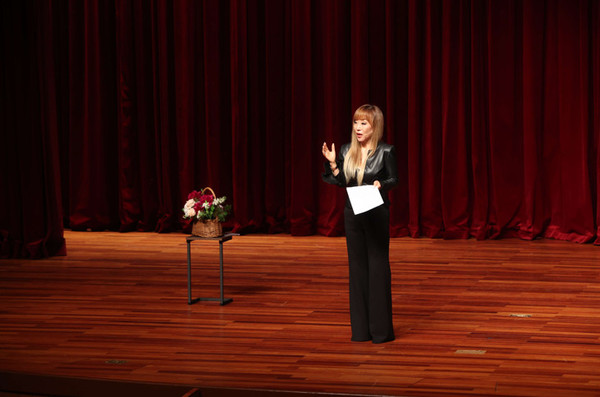On May 13, visiting distinguished professor Sumi Jo held a special lecture, “Drawing”, which aimed to share her story of becoming a world-recognized soprano. In the special lecture, which was held in the Auditorium (E15), Professor Jo talked about the difficulties she faced, her mindset that led her to become one of the world’s most eminent sopranos, and her enthusiasm for technology that could be implemented in the performing arts in the future.

For the opening performance, the KAIST student club Chorus sang “I’m a KAIST”, an arrangement of the KAIST school song that was sung by Professor Jo in a cultural event earlier this year. As for the lecture itself, Professor Jo elaborated on various episodes that she went through during her younger years and her years spent studying abroad while performing on world stages. Though she encountered many setbacks, Professor Jo found that those setbacks eventually became the driving force for her artistic expression. She also encouraged students to gain confidence, rather than comparing themselves with others.
On the same day, Professor Jo also attended the opening ceremony of the Sumi Jo Performing Arts Research Center held in the building of the Graduate School of Culture Technology (GSCT) (N25). The new center will conduct research on the performance arts based on AI and metaverse technology. The center will focus on modeling a virtual stage and a virtual performer using AI that generates performances and motions, and allowing interactions between human and virtual performers using audio analysis and motion recognition. Applied research based on convergence technology that results from the synergistic combination of academic fields will also be pursued. This research will have applications that span the entire performance industry, such as performance and stage production.
Juhan Nam, the Director of the Sumi Jo Performing Arts Research Center, stated, “In addition to KAIST professors, we will actively collaborate with professors from other universities like Seoul National University and the Korea National University of Arts, as well as musicians and performance experts from both within and outside Korea. Through the Sumi Jo Performing Arts Research Center, we will apply science and technology to culture and art, thus making the center a venue for joint research that will improve performances of the future.” In accordance with this vision, Professor Jo has pledged to provide ample guidance based on her considerable experience in and understanding of performances to widen the horizons of KAIST students concerning culture and arts.

